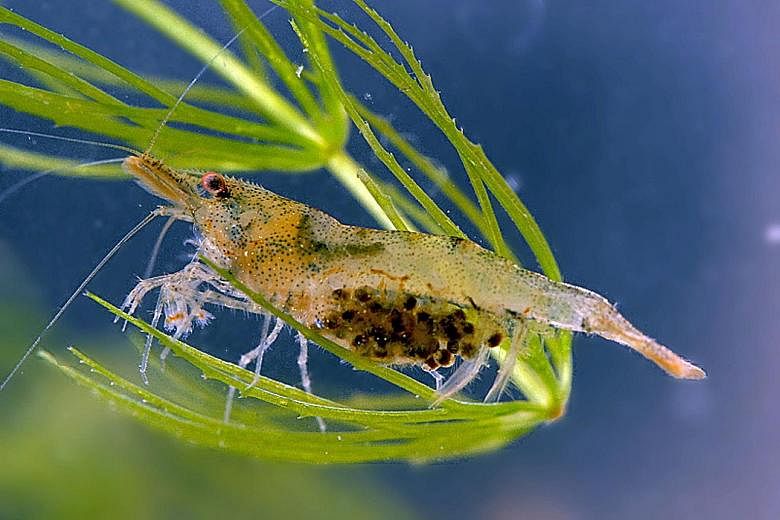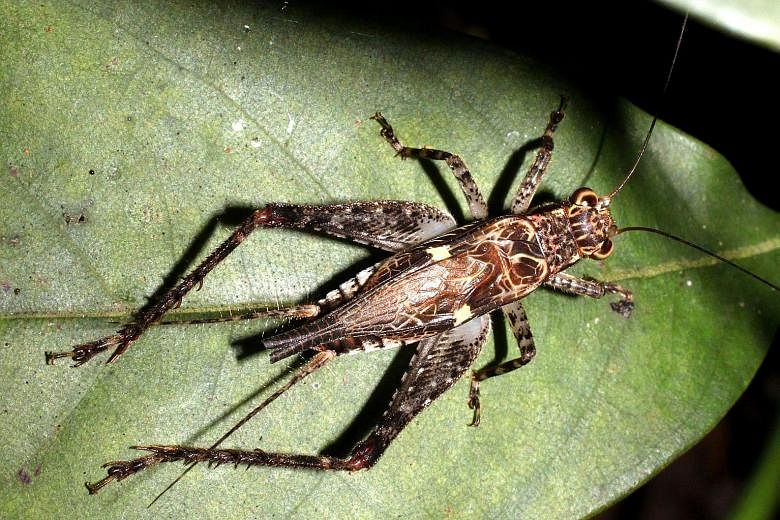Nacaduba pavana singapura
This is a fairly rare butterfly that inhabits the landward edge of mangrove swamps. The best place to spot this pretty butterfly is Sungei Buloh Wetland Reserve, where its caterpillar host plants can be found.
Asiophlugis temasek
Initially mistaken for another species of katydid or bush cricket, the Asiophlugis temasek is a small and green insect found to be new to science in 2011. It has distinctly huge eyes and is known to be predatory. It is often found on the foliage of young trees. Crickets, along with grasshoppers and katydids, belong to a group of insects called Orthoptera.
Durio singaporensis
The Singapore Durian is a large forest tree that grows up to 40m in height. It is found only in Singapore and Peninsular Malaysia. Though the Singapore Durian is a close relative of the species of durian that is commonly eaten, its seeds are unfortunately not fleshy and the fruits are also much smaller. They measure just 10cm in size.
Tectaria singaporeana
The Monitor Lizard Fern, or Paku Biawak in Malay, is commonly found growing along the slopes of the Bukit Timah Nature Reserve and the Central Catchment Nature Reserve. This species is identified by the depressed veins and thin black stalk of its fronds.
Caridina temasek
This tiny shrimp can be found only in one stream in the Central Catchment Nature Reserve. Possessing pincers that allow it to filter minute organisms found in the stream, it was first described in 1991 from Singapore. This shrimp has since been found in Peninsular Malaysia as well.
Cardiolactylus singapura
This brown cricket is characterised by a rather slender body with two white spots on its wings. While Cardiolactylus is a specious genus of cricket and can be found throughout South-east Asia, this species is native to Singapore.






